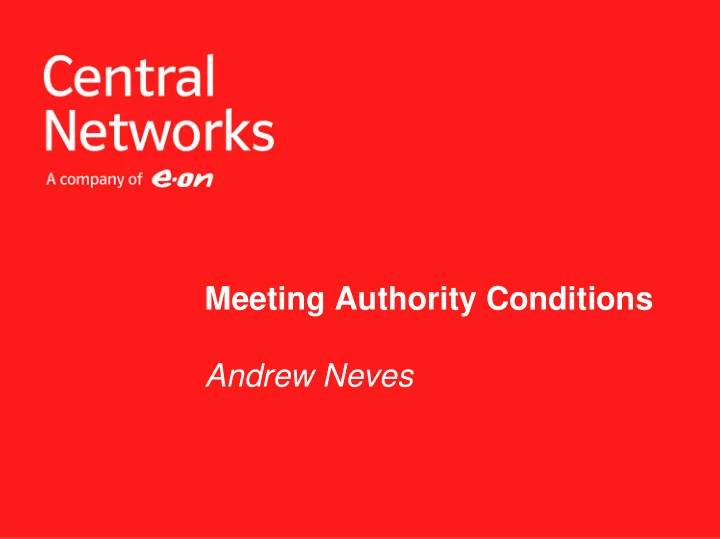

Meeting Authority Conditions Andrew Neves
Major themes for demand tariffs • New long run marginal cost model • Fewer tariffs • For HH customers: – Greater emphasis on demand charges – Differential charges for excess demand – Reactive power charges • No changes to generation charge methodology
New long run marginal cost model • Forward looking model based on ‘500MW model’ principles • New spreadsheet implementation of model • Model populated with fresh data via links to many sources • Yardstick outputs used to set tariffs
Fewer tariffs • Aim for reduced set of tariffs – Fewer ‘flavours’ of each tariff (e.g. slightly different time slots) – Remove residual metering-driven differentiation (e.g. card meters) • Paves the way for longer term framework
Greater emphasis on demand charges (HH) Demand main driver of costs: • Therefore collect larger proportion of revenue from demand charges; and • Collect less from unit rates
Differential charges for excess demand (HH) • Central Networks charge for excess capacity in the month • Excess capacity charges were three times the normal rate • Authority criticised this as not cost reflective • Therefore developing new cost reflective methodology for setting excess multiple • Strong evidence that monthly excess demand charge premium is effective
Differential charges for excess demand (HH) Average Excess in KVA per Instance of Exceeding 140 120 100 80 KVA 60 40 20 0 Jun-02 Oct-02 Dec-02 Feb-03 Jun-03 Oct-03 Dec-03 Feb-04 Jun-04 Oct-04 Dec-04 Feb-05 Apr-02 Aug-02 Apr-03 Aug-03 Apr-04 Aug-04 Month Average Excess per Instance of Exceeding Linear (Average Excess per Instance of Exceeding)
Differential charges for excess demand (HH) Average Excess in KVA per Instance of Exceeding 240 220 200 180 160 140 KVA 120 100 80 60 40 20 0 Jun-02 Oct-02 Dec-02 Feb-03 Jun-03 Oct-03 Dec-03 Feb-04 Jun-04 Oct-04 Dec-04 Feb-05 Apr-02 Aug-02 Apr-03 Aug-03 Apr-04 Aug-04 Month LV Average Excess per Instance of Exceeeding HV Average Excess per Instance of Exceeding Linear (LV Average Excess per Instance of Exceeeding) Linear (HV Average Excess per Instance of Exceeding)
Reactive power charges • Reactive power charges new to Central Networks • Evidence of poor power factors among demand customers • Looking at method similar to some other DNOs – Where monthly kVArh >33% of kWh (i.e. average PF worse than 0.95) – Excess charged pence per kVArh rate – Charge rate related to capacity charge
Recommend
More recommend